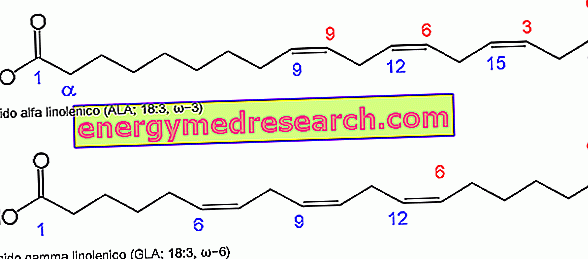Generality
What is the culatello of Zibello?
Culatello di Zibello is an Italian salami, typical of the province of Parma.
It is produced from a part of the pork leg ( Sus scrofa domesticus ), raw, finely processed, salted, stuffed and seasoned.

Note : the Culatello di Zibello is different from the breech or culaccia, consisting of the same cut but also including rind and suitably sprinkled with lard on the remaining surface.
From a nutritional point of view, the culatello di Zibello belongs to the fundamental group of foods, as a source of high biological value proteins, specific vitamins and minerals; also contains a lot of sodium. It is eaten almost exclusively raw, as a dish, in appetizers and in dishes.
Protected Designation of Origin
From 2 July 1996, the culatello di Zibello has the DOP recognition (Protected Designation of Origin). This honor, also thanks to the protection of the official consortium, guarantees the respect of the production disciplinary and the consequent maintenance of the total quality of the product.
The production area is restricted to the territories: Polesine Parmense, Busseto, Zibello, Soragna, Roccabianca, San Secondo, Sissa and Colorno.

Nutrition
Nutritional properties
As anticipated, culatello di Zibello is a product that belongs to the fundamental group of foods (meat, fish and eggs, natural sources of high biological value proteins, mineral salts and specific vitamins).
It has a significant energy supply, but, compared to the average of preserved meats, it is not excessive.
Calories are supplied mainly by lipids, followed by excellent amounts of peptides; carbohydrates are absent.
Culatello di Zibello contains all the essential amino acids in quantities and proportions similar to human proteins.
Fatty acids are predominantly unsaturated, with great importance of monounsaturated fats, although the portion of the saturated is by no means negligible.
The fibers are absent, while the cholesterol is quite significant.
Among the minerals the concentrations of: sodium, potassium, phosphorus and iron stand out.
With regard to vitamins, we especially appreciate the levels of water-soluble in group B, with particular importance of thiamine (vit B1) and niacin (vit PP). It does not contain allergens other than pig proteins and neither does nutritional factors potentially subject to food intolerance (eg histamine, gluten and lactose).
The culatello of Zibello lends itself to the diet of the healthy subject. It is not particularly recommended, in abundant and frequent portions, to the clinical nutrition of overweight subjects or those suffering from metabolic pathologies such as primary arterial hypertension, sodium and hypercholesterolemia. On the other hand, used in moderation, along with bresaola and lean ham, culatello is the most suitable salami to satisfy these nutritional requirements.
Left raw it is unsuitable for a pregnant woman's diet due to the risk of parasitosis.
It is not included in the nutritional regimes: vegetarian, vegan, kosher, Muslim and Hindu.
The average portion of culatello di Zibello is about 50-100 g (slightly less than 100 kcal).
| CULATELLO (100g) | ||
| Power | kcal | 198.0 |
| kj | 828.0 | |
| Protein | g | 19, 74 |
| Lipids | g | 12, 58 |
| Carbohydrates | g | 0.0 |
| fibers | g | 0.0 |
Features
Aspect and organoleptic characteristics
Culatello di Zibello is a sausage of similar shape to a large pear, with an approximate weight of 4 kilograms.
Outside it has the typical color of the pig bladder (light brown), normally painted white due to the presence of the typical molds necessary for maturing.
The classic net-shaped twine binding, which must absolutely not be removed until consumed, is typically "wide", due to the reduction of the volumes of the cured meat with the seasoning.
When cut, this cured meat is predominantly red, with veins and edging of white fat.
Culatello di Zibello has a soft consistency, a characteristic and delicate flavor with a moderately salty taste.
Kitchen
Gastronomic use
What distinguishes the Culatello di Zibello is the treatment it undergoes before consumption. Given its very tenacious consistency, it is almost impossible to skin and cut. That is why, after having disconnected and brushed it with mildew with warm water, it is immersed in dry white wine for a few days and, only then, peeled, degreased and sliced.
The culatello of Zibello started must be anointed with oil or melted butter and wrapped in a linen cloth soaked in wine. Storage should take place in a cool place but not in a refrigerator, which compromises the taste.
The best method for eating culatello from Zibello is raw, thinly sliced (even with a knife), perhaps accompanied by the Micca di Parma (typical bread).
It can also be served with pinzini, fried dumplings, tigelle (crescentina) and piadina.
The combination with pickles and soft cheeses, such as squaquerone and stracchino, fresh ricotta and mature cheeses such as Grana Padano, Parmigiano Reggiano and Provolone are widespread.
It can also create elaborate recipes of appetizers, first courses and cooked dishes, although for these purposes lower quality cured meats would be more suitable.
Oenological pairing
The culatello of Zibello is successfully combined with white wines such as: Colli Orientali del Friuli Ribolla gialla and Garda Chiaretto.
Production
Productive outline
Culatello di Zibello is a salami obtained from the processing of the pork leg (15-20 kg gross weight) of the Black Parma or Mora Romagnola breed.
The pigs used must have a minimum age of 9 months and come exclusively from Emilia Romagna or Lombardy, where they are preferably bred in semi-freedom and fed with acorns, chestnuts and corn.
The Consortium for the Protection of Culatello di Zibello PDO has established that the production must take place exclusively between October and February, when the climate is characterized by the presence of fog and low temperatures. Unlike raw ham (see also Parma ham), consisting of the whole private leg of the trotter, culatello di Zibello does NOT contain: bones, rind, fiocchetto muscle and suet.
The meat is boned, skinned and trimmed by hand.
With the bow removed from the thigh another salami is obtained, apparently similar to the culatello, while with the trimming cuts a salami is prepared called "Strolghino".
The culatello di Zibello is then salted and spiced (massaged), tied tight, hung and left to rest in a cold and dark environment. It is then untied, stuffed into a properly sewn pig's bladder (investiture procedure) and permanently bound.
The last phase is the aging of 10-18 months (depending on the size), which must first take place in warm and dry environments and then in the special dark, cold and humid cellars.
Temperature, humidity and ventilation are cleverly modulated by opening and closing the windows or moving the sausages from one side of the room to the other; if they tend to dry out too much, it is common to wet them with rags soaked in cognac wine.
At the end of maturation, the Zibello culatello weighs about 3-5 kg.
The annual culatello production of Zibello DOP is around 50, 000 pieces; the average price of around 100 € / kg.
Curiosity
The first written trace of the culatello of Zibello dates back to 1735. The quality of this salami is widely described in various works by scholars and historians such as Pezzana and Bonaventura.
Among the most famous enthusiasts of this sausage we mention Giuseppe Verdi, a native of the production site, Prince Charles of England, Prince Albert II of Monaco and Giorgio Armani.



